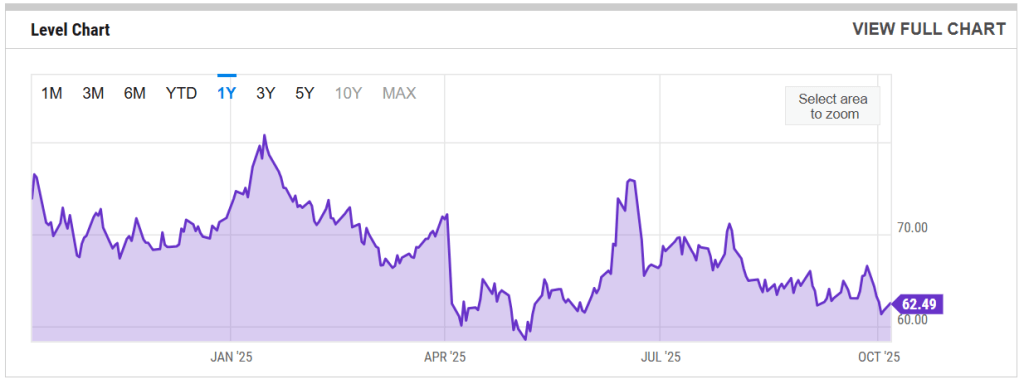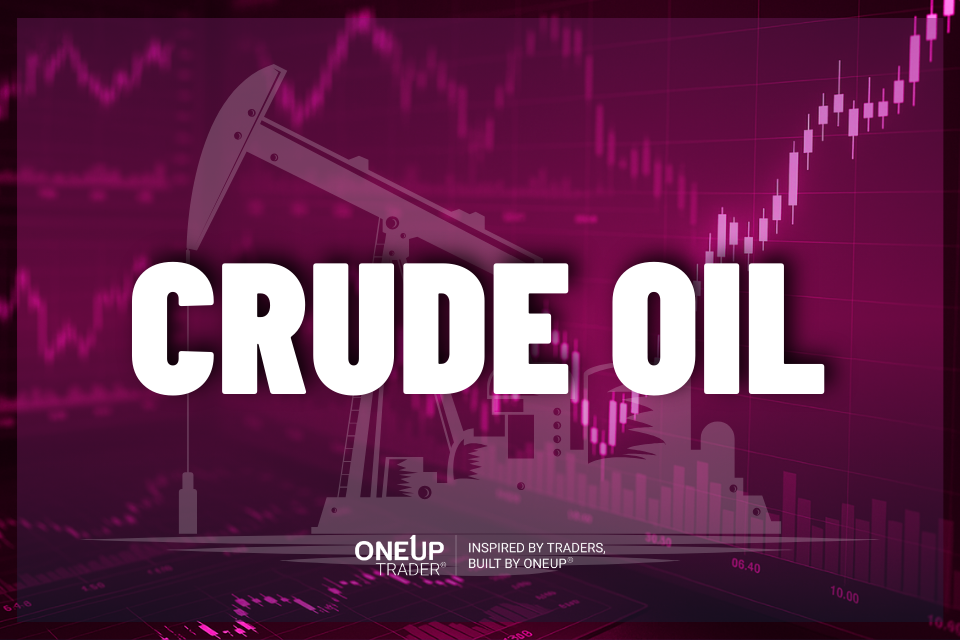- Oil prices remain soft as the Gaza ceasefire reduces geopolitical risk.
- A smaller hike by the OPEC+ and global demand concerns add to the bearish pressure.
- The US EIA shows a higher demand for petroleum products in the US.
Oil prices continued the subdued momentum on Thursday as geopolitical risks in the Middle East eased, while persisting supply concerns dragged the benchmark lower. Brent crude futures slipped 0.50% to $65.90 while WTI fell 0.60% to $62.15.

The downward trend reveals a broad bearish sentiment dominating the energy market, with analysts debating not the fall of oil prices but how deep the decline will be. Francesco Martoccia, an analyst at Citigroup, says, “Convictions regarding the depth of the decline vary, with some clients doubting a minimum Brent price of $60 per barrel will be enough to rebalance the market.”
Oil prices have slumped more than 10% year-to-date, with Brent crude ending lower in August and September. The downfall is mainly attributed to the expectations that the global oil supply will continue to outpace demand as non-OEPC producers have reduced production. At the same time, OPEC+ has shown the least willingness to cut output. The recent decision of the cartel to raise the production target by 137k barrels per day in November, which is smaller than anticipated, did little to stabilize the oil prices.
China’s inventory buildup has lent limited support, though most of the stock stays outside the key price hub. Bloomberg, citing analysts, said that the demand is inadequate to absorb the inventories due to underlying weakness in the growth in major demand areas.
Adding to the pressure, the Gaza ceasefire agreement between Hamas and Israel has eased the geopolitical tension that had previously added a risk premium to the oil prices. According to OANDA analyst Kelvin Wong, “WTI crude is trading on the weaker side due to a reduction in geopolitical risk premium triggered by the Israel-Hamas peace deal.”
Meanwhile, the US EIA data showed the demand for petroleum products in the US climbed to 21.99 mbpd, the highest since December 2022. It suggests the resilience in the US consumer base despite a slower global economy. However, the JP Morgan analysts warned of moderation in the worldwide demand indicators, like truck mileage in Germany and port throughput in China.



